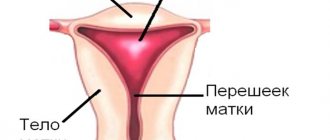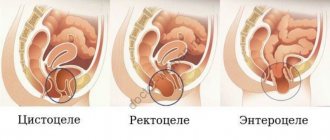Cervical cancer is the most common type of cancer among women. Cervical cancer is a disease caused by the uncontrolled proliferation of certain cells located in the squamolar junction, which turn into malignant cells. Cervical carcinoma is the leading cause of death from gynecological cancer in the world, and nearly half of cases occur in women aged 35 to 55 years. Early diagnosis is important to treat the disease in its early stages, when the chances of recovery are higher.
Risk factor for cervical cancer
Human papillomavirus (HPV)
Unfortunately, this infection is difficult to prevent in sexually active adults, also given the lack of effectiveness of condoms in preventing the spread of this virus. Today, almost 100 different HPV genotypes are known; Of these, about 40 have a predisposition (tropism) to reproduce in the typical environment of the genital tract.
Other recognized risk factors:
- Early onset of sexual activity (in early adolescence, which ends around age 16) and sexual promiscuity of the individual or their partner should be considered risk factors for contracting HPV and other infections. genital tract, mainly responsible for cervical cancer.
- Having given birth many times or at an early age (in adolescence).
- Herpes simplex infections, which are promoted, for example, by poor sexual hygiene.
- The use of oral contraceptives, especially if they are prolonged over time, is not in accordance with the indications of the attending physician. Evidence shows that taking oral contraceptives for more than 5 years significantly increases the risk.
- Weakening of the immune system (immunosuppressive syndromes).
Publications in the media
Cervical cancer is an invasive process that usually begins at the site of transition of stratified squamous epithelium to single-layer columnar epithelium and is represented by either stratified squamous or glandular epithelium. Cervical cancer is one of the leading causes of death from cancer, despite a 50% decrease in the incidence of this disease over the past 30 years.
Statistics • Incidence: 15.9 per 100,000 female population in 2001 • Predominant age •• Invasive cervical cancer is most often detected at the age of 40–50 years •• Before 30 and after 70 years, primary cervical cancer is detected in approximately 7 and 16% women, respectively. Risk factors • Infection with the HPV virus, HSV type 2 (HSV-2), HIV • Smoking • Exposure to diethylstilbestrol in utero • Early onset of sexual activity • Large number of sexual partners • Early first birth • Sexually transmitted diseases • Taking oral contraceptives. Pathomorphology • The most common type is invasive squamous cell carcinoma (80–85%) • The second most common type is invasive adenocarcinoma (15–20%) • Small cell carcinoma, warty carcinoma, and lymphoma are less commonly diagnosed. Clinical picture • Irregular spontaneous vaginal bleeding • With widespread local damage, foul-smelling bloody discharge and dull pain in the lower abdomen occur • Vaginal bleeding after sexual intercourse • Dyspareunia • Hematuria • Rectal bleeding • Enlarged cervix. Classification • According to the TNM system •• Tis - cancer in situ •• T1 - cervical cancer, limited (spread to the body is not taken into account) •• T1a - invasive carcinoma, diagnosed only microscopically ••• T1a1 - stromal invasion no more than 3.0 mm in depth and up to 7.0 mm horizontally ••• T1a2 - stromal invasion no more than 5.0 mm, horizontal spread up to 7.0 mm •• T1b - clinically visible tumor limited to the cervix, or a microscopic tumor larger than T1a2 ••• T1b1 - clinically detectable tumor up to 4.0 cm in greatest dimension ••• T1b2 - clinically detectable tumor more than 4.0 cm in greatest dimension • T2 - tumor extends beyond the uterus, but without invasion of the pelvic wall or lower third of the vagina •• T2a - without parametrium invasion •• T2b - with parametrium invasion • T3 - cervical cancer with spread to the pelvic wall and/or involvement of the lower third of the vagina, and/or leads to hydronephrosis, or a non-functioning kidney •• T3a - tumor invades the lower one-third of the vagina, but does not extend into the pelvic wall •• T3b—tumor extends into the pelvic wall and/or results in hydronephrosis, or a nonfunctioning kidney • T4—tumor involves the lining of the bladder or rectum and/or extends beyond the pelvis (presence of bullous edema does not indicate a tumor category like T4) •• Regional lymph nodes •• N1 - metastases in regional lymph nodes • Distant metastases M1 - there are distant metastases.
• Grouping by stage •• Stage 0: TisN0M0 •• Stage IA1: T1a1N0M0 •• Stage IA2: T1a2N0M0 •• Stage IB1: T1b1N0M0 •• Stage IB2: T1b2N0M0 •• Stage IIA: T2aN0M0 •• Stage IIB: T2bN0M0 •• Sta Diya IIIA : T3aN0M0 •• Stage IIIB: ••• T1N1M0 ••• T2N1M0 ••• T3aN1M0 ••• T3bN0–1M0 •• Stage IV A: T4N0–1M0 •• Stage IV B: T0–4N0–1M1. Laboratory tests • CBC (possible anemia due to chronic blood loss) • Serum creatinine (possible urinary tract obstruction) • Liver function tests (possible metastasis) • Papanicolaou smears. Special studies • Colposcopy includes examination of the transformation zone and the border of squamous and columnar epithelium at 7.5–30 times magnification after application of 3–5% acetic acid solution • Curettage of the cervical canal is carried out in combination with colposcopy to exclude dysplasia that is not detected during colposcopy • Cervical biopsy. The piece must be of sufficient size to include cervical stroma, which is necessary to determine the extent of invasion • Cervical cone biopsy is used for the initial extent of invasion or to determine the depth of the lesion • Pre-treatment examination for histologically confirmed invasive cervical cancer is aimed at exploring known routes of spread ( direct spread, involvement of lymphatic vessels or hematogenous spread) •• Mandatory studies ••• Chest X-ray ••• Intravenous pyelography ••• Irrigography ••• Cystoscopy and sigmoidoscopy under anesthesia •• Optional studies include CT, MRI, lymphangiography, biopsy tumors with a thin needle. Differential diagnosis • Severe cervicitis • Cervical polyp • Endometrial cancer with spread to the cervix • Metastatic lesions, including choriocarcinoma.
TREATMENT Management tactics depend on the patient’s age, general condition and clinical stage of cancer. • Dysplasia and carcinoma in situ are treated surgically: • In stage IA: •• With microinvasion (up to 1 mm), young women can undergo wide and high conization •• With invasion up to 3 mm (T1a1) - hysterectomy (up to 45 years - without appendages) •• For invasion of 3–5 mm (T1a2) - extended extirpation of the uterus with appendages •• Over the age of 50 years, with localization in the cervical canal, common anaplastic variant, combination with uterine fibroids or tumors of the appendages, relapse after previous operations , hysterectomy is indicated. If there are contraindications to surgery, intracavitary radiation therapy is performed. • In stages IB–IIA, women of reproductive age undergo combined treatment (Wertheim operation and radiation therapy). • In stage IIB and more, as well as in less common tumors and the presence of contraindications to surgery, the method of choice is combined radiation therapy. • Polychemotherapy complements the treatment of patients in stage IV (in parallel with radiation therapy). • Relapses •• If the process is localized, partial or total pelvic exenteration is performed (en bloc removal of the uterus, cervix, vagina, parametrium, bladder and rectum) •• In the presence of distant metastases, patients usually receive chemotherapy. Radiation therapy can be used for palliative treatment of painful metastases.
Drug therapy • To enhance the effect of radiation therapy •• Fluorouracil •• Hydroxycarbamide •• Cisplatin • For relapse and metastasis •• Bleomycin •• Etoposide •• Cisplatin or carboplatin •• Ifosfamide • For the prevention and relief of nausea and vomiting - ondansetron, metoclopramide. Monitoring • During treatment - physical examination and Pap smears • After treatment - periodic visits to the doctor for a pelvic examination and Pap smear; also studies include chest x-ray and intravenous pyelography •• During the first year - every 3 months •• Then for 5 years - every 6 months •• After 5 years, monitoring is carried out annually • Suspicious signs and symptoms •• Chronic inflammation of the cervix •• Unexplained decrease in body weight •• Swelling of the lower limb on one side •• Pain in the lower abdomen or in the projection of the sciatic nerve •• Muco-bloody vaginal discharge •• Progressive obstruction of the ureters •• Enlarged supraclavicular lymph nodes •• Persistent cough or hemoptysis . Prevention • Pap smear examinations •• Regular examinations should begin with the onset of sexual activity •• If there are high-risk factors, the examination is carried out annually •• If the risk of tumor development is low and with two consecutive negative Pap smear results, examinations can be carried out every 2 years • Quitting smoking • Prevention of STDs. Complications • Fistula in the urethra (less than 2% of cases during treatment) • Hydronephrosis • Uremia. Course and prognosis • 5-year survival after surgical treatment •• Stage IB - 84% •• Stage IIA - 52% • 5-year survival after radiation therapy •• Stage IB - 85% •• Stage IIA - 80% •• Stage IIB - 67% •• Stage IIIA - 45% •• Stage IIIB - 33% •• Stage IVA - 14% • Locally limited relapses. 25% of patients initially treated surgically can be spared from disease recurrence with pelvic radiation therapy • Metastatic relapses. Cases of cure are extremely rare, and the therapeutic effect is individual and short-lived. Associated pathologies • Cancer in situ and invasive cancer of the vagina • Cancer in situ and invasive cancer of the vulva • Warts. Features during pregnancy . Cervical cancer in pregnant women occurs in 1% of all cases of cancer of this localization • Cancer in situ. Treatment is postponed until delivery (can be done through the natural birth canal) • Invasive cancer •• I trimester - radical hysterectomy or radiation therapy after termination of pregnancy •• II trimester - the fetus is removed by hysterotomy, then radiation therapy or surgical treatment is performed •• III trimester - Treatment is delayed until fetal viability is achieved. Natural childbirth is contraindicated.
ICD-10 • C53 Malignant neoplasm of the cervix • D06 Carcinoma in situ of the cervix
Symptoms of cervical cancer
Cervical cancer, at least in the early stages, is often asymptomatic, so it is important to have gynecological checkups and annual examinations (such as a PAP test), which in most cases can diagnose the disease at an early stage of its development. Symptoms, if present, are subject to different interpretations because they are common to many diseases of the reproductive system and sometimes occur even in healthy people. If one or more of the events listed below occurs, it is important to perform a gynecological examination to rule out other pathologies.
- Abnormal vaginal bleeding (outside the menstrual cycle)
- Unusual vaginal discharge (in color and consistency)
- Pelvic pain
- Pain or bleeding during intercourse
Prevention of RTM
An important role in the prevention of uterine cancer is played by maintaining normal weight, moderate physical activity, and timely detection and elimination of hormonal disorders. Reduces the risk of tumor development by taking modern combined oral contraceptives.
Postmenopausal women taking hormone replacement therapy or with a history of breast cancer should be wary of RTM and carefully monitor their health.
Absolutely all women are recommended to undergo a preventive examination by a gynecologist at least once a year. If you have bleeding from the genital tract (even minor), abdominal pain, or enlarged lymph nodes, you should consult a doctor as soon as possible.
You can undergo diagnostics and receive recommendations for treatment by making an appointment at the SM-Clinic. Recording is carried out around the clock.
The information in this article is provided for reference purposes and does not replace advice from a qualified professional. Don't self-medicate! At the first signs of illness, you should consult a doctor.
Diagnosis of cervical cancer
- HPV DNA Test This is a laboratory test that allows patients with signs of HPV infection to determine the viral strain responsible for the infection. The HPV family includes dozens and dozens of viral variants that provide varying levels of risk (high, moderate, or low) for causing cervical cancer.
- Gynecological examination with pelvic examination In patients with suspected or diagnosed cervical cancer, a thorough examination of the pelvis is necessary to establish: the size of the tumor at the level of the cervix, if the tumor is limited to the level of the cervix or locally developed, that is, if it has penetrated the vagina, the lateral parameters (uterine ligaments), bladder in front or rectum in back.
- Colposcopy with biopsy This is a procedure that involves the use of a colposcope, an instrument that allows you to view the cervix and vagina in a magnified and well-lit environment. It is used to detect the possible presence of abnormal areas, highlighted through the use of specific dyes (acetic acid and Lugol's solution). If suspicious areas are identified, the doctor can perform a targeted biopsy: the tissue fragments collected in this way are analyzed using histological examination.
- Magnetic resonance imaging of the pelvis Magnetic resonance imaging is a non-invasive method that does not use ionizing radiation. This is a diagnostic tool of greater anatomical detail for studying the pelvis, capable of assessing the local extent of the disease (tumor size, expansion of adjacent structures, involvement of lymph nodes).
- CT chest computed tomography (CT) is a technique that uses ionizing radiation and is very important to rule out that the tumor has invaded distant organs (distant metastases) from the cervix, such as the lungs.
- Axial positron emission tomography (PET). This is a test that detects active cancer cells. Can be used in doubtful cases of distant tumor locations.
Surgery for cervical cancer
It involves removing tumor tissue through surgery using one of the following methods:
- Conization: is a procedure that involves the removal of a cone-shaped portion of the cervix and can be used simultaneously for diagnostic (such as extended biopsy) and therapeutic purposes, as it is able to completely remove, and therefore cure, tumors in situ and smaller tumors (stage I ).
- Radical hysterectomy: involves removal of the uterus (body and neck) along with surrounding connective tissue (parameters) and the upper vaginal collar. A radical hysterectomy is often accompanied by a pelvic lymphadenectomy, which involves removing the fatty tissue surrounding the pelvic blood vessels where the lymph nodes are located. Additionally, during this intervention, based on the woman's risk factors and age, it may also be beneficial to remove the appendices (tubes and ovaries). Traditionally, this operation is performed through an abdominal incision (laparotomy), but it is now internationally accepted that experienced operators can perform radical hysterectomy even using a laparoscopic approach.
Causes of the disease
Hormonal disorders
. The development of a tumor is caused by disturbances of endocrine metabolism, in particular, hyperestrogenism - an increase in the level of the female sex hormone estrogen. This condition can occur with diseases such as obesity (various degrees of obesity increase the risk of developing RTM from 3 to 6 times), diabetes mellitus, hypertension, and some types of ovarian tumors. Risk factors in this group are frequent abortions or miscarriages, absence of pregnancy and childbirth, late menopause, and the woman receiving estrogen hormone replacement therapy. Hormone-dependent tumors often develop against the background of uterine polyps and endometrial hyperplasia. Among all cases of RTM, neoplasms arising due to hormonal disorders account for 70%.
Endometrial atrophy
. Cancer of the uterine body occurs in the absence of endocrine metabolic disorders. This reason is also characterized by a general decrease in immunity. Against the background of atrophic processes and immunosuppression, RTM develops in 30% of patients.
Malignant neoplasms of the endometrium can be provoked by genetic disorders and family history
.
An additional risk factor is a history of breast cancer
, since taking a chemotherapy drug for its treatment increases the likelihood of developing RTM.
Radiotherapy for cervical cancer
Radiation therapy is a treatment method that involves the use of ionizing radiation aimed directly at the tumor tissue level to destroy cancer cells. For cervical cancer, this treatment may also be used in combination with chemotherapy. In this case, chemotherapy is used to make cancer cells more sensitive to the carcinogenic effects of radiation therapy. There are two main types of radiation therapy: external beam radiation therapy, in which the radiation comes from a source (special therapeutic devices called linear accelerators) placed outside the patient, and internal or brachytherapy, in which the radiation source is placed directly in contact. with the disease using a probe. During radiation treatment, the patient follows a program of visits to the radiation oncologist for clinical evaluation of ongoing treatment.
Chemotherapy for cervical cancer
Several drugs have been shown to be active in the treatment of cervical cancer. In some cases, it is advisable to prescribe monochemotherapy (that is, only one drug), in other cases - polychemotherapy (that is, a combination of several drugs).
Chemotherapy may be used:
- Before surgery, reduce tumor size (neoadjuvant)
- In combination with radiation therapy as exclusive treatment and after surgery (adjuvant)
- In the later stages of the disease, symptoms decrease and quality of life improves.
Forecast
The prognosis for survival from uterine cancer, as well as complete recovery and relapses, depends on many factors. First of all, this is the time of cancer detection; the earlier the tumor is diagnosed, the more favorable the prognosis. The type of malignancy, the patient’s age, the presence of concomitant diagnoses, the chosen treatment tactics and the body’s response to therapy also influence.
Average prognosis for five-year survival if cancer is detected at the appropriate stage:
- in situ – 90%;
- I – 75%;
- II – 69%;
- III (A, B, C) – 58%, 50%, 47%;
- IV (A, B) – 17%; 15%.
Recurrence of uterine cancer is possible, most often it occurs within 2 years after treatment. The relapse rate is on average about 10%, it depends on the type of tumor and the degree of differentiation.









